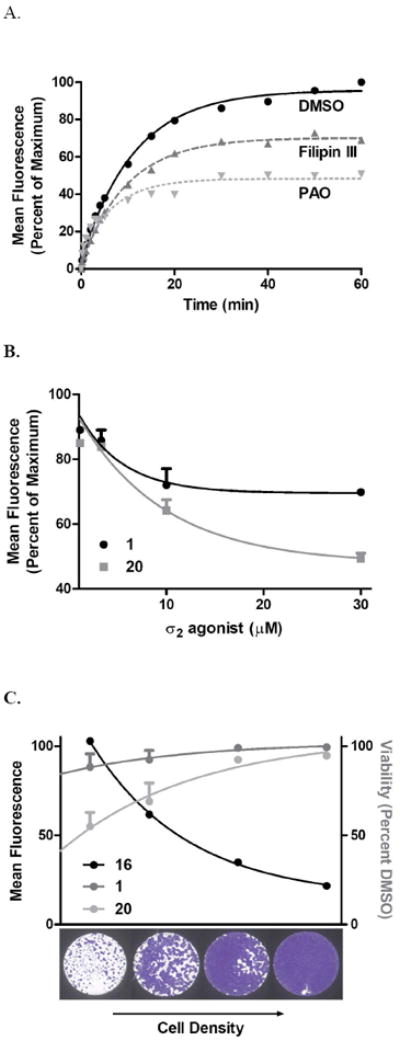Figure 1.

Cellular Internalization of the Fluorescent σ2 Receptor Ligand 16.
A) Kinetic uptake of compound 16: BxPC3 pancreatic cancer cells were treated for 1 h with the endocytosis inhibitors Filipin III (5 μg/mL) or phenylarsine oxide (PAO, 10 μM) or DMSO vehicle for 60 min prior to kinetic uptake analysis of 16 (25 nM) by flow cytometry. Compound 16 uptake represents the percentage of the mean fluorescence of maximum signal intensity.
B) Competition of compound 16 by σ2 agonist structural analogs. BxPC3 cells were treated with increasing doses of compounds 1 or 20 for 45 min prior to replacement with compound 16 (25 nM) for 45 min and fluorescence intensity quantified by flow cytometry.
C) Cell density dependence σ2 agonist uptake and cell death. BxPC3 cells were seeded at increasing densities to achieve a range of dividing, subconfluent and quiescent, confluent cultures. The following day, cells were treated with compound 16 (25 nM) and fluorescence intensity quantitated by flow cytometry. Alternatively, cell were treated with compound 1 or 20 (100 μM) for 24 hours and viability compared to DMSO control.
